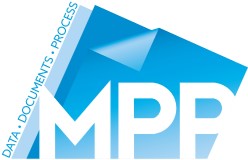In today’s fast-paced digital world, choosing the right printing solution for your business is crucial. Many organisations often grapple with understanding the differences between various types of printers, particularly Multi-Function Printers (MFP) and Multi-Function Devices (MFD). Both options provide similar functionalities, but a closer inspection reveals key differences that can impact your business’s printing strategy. This blog will explore these differences and shed light on managed print services that can help you optimise your printing infrastructure.
Understanding MFP and MFD Printers
To begin with, it’s essential to understand what MFP and MFD printers are. Both terms refer to devices that integrate multiple functionalities into one machine—typically printing, scanning, copying, and faxing.
Multi-Function Printer (MFP)
An MFP, or Multi-Function Printer, typically refers to smaller, often personal or office-oriented printers. These devices are designed for low to moderate print volumes and are popular in small businesses and home offices due to their user-friendly interface and versatility. MFPs are often compact, saving space while providing multiple functionalities to the user.
Multi-Function Device (MFD)
On the other hand, an MFD, or Multi-Function Device, chimes in at a higher performance level. MFDs are generally larger systems designed for higher volume environments, such as large offices, print shops, or corporations. They offer more advanced features, superior speed, and better durability than standard MFPs. MFDs are equipped to handle extensive workloads and provide advanced document management features, making them more suitable for businesses that require heavy use of printing and integrating with networks.
Key Differences Between MFP and MFD
Understanding the distinctions between MFP and MFD printers is crucial for making an informed decision based on your specific needs. Here are some of the essential differences:
1. Functionality
While both MFPs and MFDs serve multiple purposes, MFDs typically offer more advanced capabilities. For example, MFDs might include features such as advanced colour management, higher-capacity paper trays, and robust security options that are often absent from MFPs.
2. Print Volume
Another stark contrast lies in their printing capacity. MFPs are designed for low to moderate print volumes and may struggle with high-demand environments, while MFDs are engineered to accommodate high-volume printing, making them ideal for businesses with large-scale printing needs.
3. Cost and Maintenance
When it comes to costs, MFPs tend to be more budget-friendly, making them an attractive option for smaller businesses or those just getting started. However, MFDs, due to their complex technology and large-scale production capabilities, generally come with a higher upfront investment and maintenance costs. Nevertheless, they might offer a better return on investment in the long run for larger enterprises due to their efficiency.
4. Space and Setup
MFPs excel in compactness, often designed to fit on a desk or work surface easily. Conversely, MFDs require more floor space and are generally installed in a dedicated area within a workplace, often served by managed print services to maintain efficiency and regular maintenance.
The Role of Managed Print Services
Regardless of whether you decide on an MFP or an MFD, integrating managed print services into your workflow can significantly enhance your document management capabilities. Managed print services (MPS) help streamline your printing processes by offering solutions that include device management, maintenance, and supply replenishment.
MPS can offer insights into your printing usage, allowing you to understand which devices are underused and if your current arrangement effectively meets your needs. These services can improve efficiency, lower costs, and ultimately lead to better utilisation of your printing solutions, whether you decide on MFPs or MFDs.
Final Thoughts
In conclusion, choosing between MFP and MFD printers comes down to your organisation’s specific needs. MFPs are suitable for lower volume, cost-conscious users, while MFDs cater to higher volume demands and offer advanced capabilities. Moreover, incorporating managed print services can further enhance your printing strategy, ensuring you maximise efficiency and lower overall costs. By evaluating your requirements and understanding the differences between these devices, you can make a more informed decision that aligns with your business’s operational needs.
